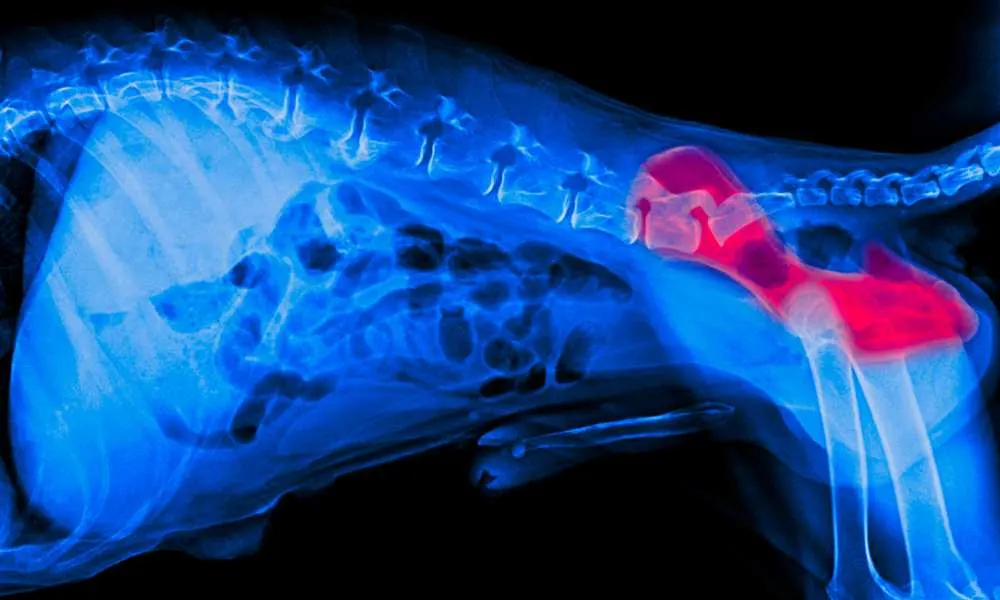All dog owners know that worrying about our pets’ health is an everyday occurrence and surely none of us like it. Knowing which health problems might be more probable than others can definitely relieve us of some of those nerves.
Precisely because of that, you’re probably wondering: What are some of the most common diseases in Corgis, and are Corgis prone to health problems in general?
The answer is not as simple – nor as good – as you might’ve been hoping for, but don’t worry – you’re not doomed. Even though Corgis are known to be one of the more health-sensitive breeds, it doesn’t mean that your beloved doggo will be affected.
Luckily, I’m here to explain this topic and get you all the right information on what you can expect regarding your Corgi’s health and all the ways you might be able to prevent potential issues from happening.
So, without further ado, let’s get into it!

Corgi Health In General
Corgis don’t necessarily have a reputation for being the healthiest of breeds – but they also aren’t riddled with fatal diseases, either.
These lovely, energetic pups require a lot of attention and care, but that shouldn’t worry you. If you provide your dog with all the necessary care, especially from a very young age, there is a high chance that you’ll avoid some of these health issues.
However, please keep in mind that some of the most common diseases in Corgis are inherited, meaning that they most likely cannot be prevented.
So, before you decide to get yourself an adorable Corgi pup, make sure that you check their ancestors’ medical history. This way, you’ll be sure that these genetic issues won’t be something to worry about in the future.
Another thing worth noting is that Corgis have achondroplasia, a form of dwarfism. That means they have the head and torso of a “regular” sized breed – but with shorter legs.
It’s unfortunate to know that this form of dwarfism has been selectively encouraged amongst breeders to maintain the cute look that it gives Corgis. That is also the standard practice among other small breeds such as dachshunds and certain breeds of terrier.
And while in and of itself, dwarfism isn’t a health issue, it could be a contributor to some other conditions later on in the life of a Corgi.
However, the initial reason that Corgis were so small was that they were bred as herding dogs, and their height was perfect for nipping at the heels of livestock they were guarding.

Most Common Diseases In Corgis
So, we know that Corgis are at risk for some diseases more than others – but what are they, and how long is the list?
Coming up next is that exact list – and some tips to help prevent some of them from occurring!

1. Hip Dysplasia
These two words are probably known to every dog owner. Usually, however, people think this is a condition reserved only for larger dogs – but that is not the case.
Hip dysplasia can, unfortunately, occur in dogs of any size and breed, meaning that Corgis aren’t excluded.
If you don’t know what this condition means, here is a brief explanation: Hip dysplasia means that the hip joint wasn’t developed properly, which ultimately results in loss of joint function over time.
As far as when this disease can happen, it usually takes time. However, it doesn’t always have to be the case, so even puppies under a year old can be affected as well.
Prevention And Treatment
Even though this is an inherited issue, there are things we, as owners, can do to perhaps delay it or, at least, not exacerbate it.
- Make sure that your dog maintains a healthy weight.
Obesity is harmful on many fronts, but when talking about hip dysplasia, it puts unnecessary weight and pressure on joints that are already suffering. That causes additional pain and hinders the compromised mobility.
An average weight for a dog suffering from this issue is crucial in helping them through it.
- Provide your dog with lots of exercise.
Starting from puppyhood, you need to make sure that your dog’s muscles are strengthened through the right amount of exercise. That can potentially delay the development of hip dysplasia, and even if it does occur, the symptoms will be less severe.
If your Corgi is diagnosed with hip dysplasia, hydrotherapy is a must. Lots of swimming will allow your dog to strengthen their leg muscles – without putting weight onto affected hips.
- Make sure that your floors aren’t slippery.
This one might seem a bit strange, but especially in the developmental phase of your pup’s life, the surface they walk on most of the time can play a significant role.
Just look at their legs when walking on a slippery surface, and it’ll be pretty clear.
Providing them with a non-slippery ground will allow them to develop their joints without added risk, not only of this disease but of injuries in general.
- Consider surgery.
It’s scary, I know, but it can significantly improve the quality of your dog’s life. If your puppy does suffer from dysplasia, consult with your vet and see if they recommend surgery.
It’s a pretty routine intervention, and dogs can usually get back to their usual shenanigans pretty quickly and live their lives pain-free.

2. Progressive Retinal Atrophy
This disease affects the photoreceptors in dogs’ eyes and degrades vision over time. Ultimately, it can lead to blindness.
Important to note – this disease is not painful, but it can certainly affect the quality of a dog’s life.
The first symptoms include night blindness, eyes that look more reflective than usual when light shines at them, as well as pupils that are more dilated than normal.
Prevention And Treatment
Unfortunately, as of yet, there are no known treatments for this disease.
However, if you start noticing any of the listed symptoms, you should probably visit your vet and consult with them about ways to keep your dog safe and make the whole process easier.

3. Von Willebrand’s Disease
This condition is also a genetic disease that happens when a dog’s genes lack blood clotting factors – known as Von Willebrand’s factor.
Just like humans, when dogs are injured and have an open wound, blood clotting factors will work to clot the blood as soon as possible and stop the bleeding.
However, when a dog lacks these clotting factors, this doesn’t happen. So, even the more minor wounds can be potentially dangerous for your Corgi.
Prevention And Treatment
Since this is a genetic disease, there’s really nothing you can do. The luck factor decides here.
Even though you cannot prevent it, you can learn what to expect and how to adjust your life as well as your dog’s life.
- Limit physical activity. Dogs that have this condition can’t afford to get hurt, so any physical activity, especially unsupervised, is a potential risk. Obviously, this doesn’t mean that you shouldn’t allow your dog to play outside, but it does warrant caution.
- Avoid meals that are difficult to chew. Bones and tough meat can lead to gum bleeding.
- Make sure your dog is always supervised. Even the smallest of injuries can be dangerous for dogs affected by this condition, so always keep an eye on them.

4. Degenerative Myelopathy
Now, this is a serious condition that affects the nerves and spine of dogs, precisely the central nervous system, spinal cord, and brainstem.
Some of the common symptoms are muscle atrophy, postural issues, partial or complete limb atrophy, and loss of muscle mass.
Currently, we don’t know what exactly causes this, but scientists are working hard on getting to the bottom of it.
Prevention And Treatment
Like with the cause, there’s no known treatment for degenerative myelopathy. And since we don’t know what causes it, we don’t know how to prevent it, either.
That doesn’t mean you should ignore it, but instead go to your vet and have a chat about management techniques to make the affected dog’s life more comfortable.

Conclusion
You came here wondering about your Corgi’s health and what some of the most common diseases in Corgis are. Hopefully, your questions have been answered. You also learned some tips and tricks that can help you delay some of these diseases – and what to do if they occur, too.
To help you memorize this information better, here is a rundown of the most important facts about this topic.
Corgis are prone to a number of diseases, some genetic, some not – but regardless of the origin, we need to know what to expect.
Canine hip dysplasia is a disease that can occur in dogs of any breed and size and is caused by a poorly developed hip joint. It results in restricted joint mobility, which can be pretty painful.
If your dog is diagnosed with this condition, surgery is an option, and it should grant your dog a good quality of life.
Progressive Retinal Atrophy is a disease that affects a dog’s photoreceptors and causes loss of vision. There are no known treatments currently – but you can make sure to take all the measures to keep your dog safe and keep their quality of life good.
Von Willebrand’s disease is characterized by a lack of blood clotting factors, which puts the affected dog at risk for excessive bleeding. It doesn’t affect your dog daily, but you should take precautions to avoid unnecessary risks.
Lastly, degenerative myelopathy is a disease of the spinal cord, brainstem, and central nervous system.
The cause is not known, and there is no cure as of now. However, you can do things to help manage your dog’s symptoms if they are diagnosed.
All in all, even though there is potential for some more serious diseases, that doesn’t mean that your doggo will be in that category.
We never know what we can expect. So, aside from the general due diligence before getting a dog and taking precautionary measures, you shouldn’t live in fear of your dog getting any of these diseases.
Enjoy your life and go on adventures with your beloved four-legged friend without being weighed down by worry. Have fun!

